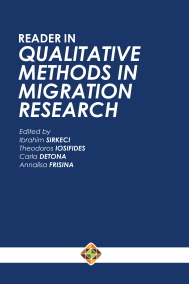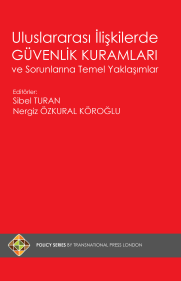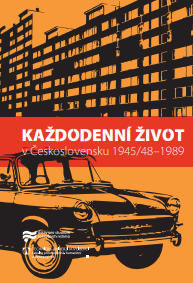
Občan, spoločnosť, národ v pohybe slovenských dejín
The author of the book pays attention to four major problem areas in the modern history of the Slovak nation, the society and the country. The research is focused on the Slovak history in the first half of the 20th century and, particularly, the period of the Czechoslovak Republic between the two World Wars. In chapters of Part 1 entitled Slovak Society within Changes of Historical Time the author tried to classify relatively short period of interwar Slovak history in wider historical interrelations. In the first chapter he examines the problem of periodization of the Slovak history within the context of history of the other Central European nations, and points at the open methodological questions of the Slovak history research ensuing from insufficient investigation of the changing collective identity of the Slovaks. The next two chapters of Part 1 are devoted to historical heritage of the Slovaks and its peripetia related to generation of Ľudovít Štúr, as the first politically oriented and functioning generation in the modern history of the Slovaks, and following generations up to the origin of Czechoslovakia in 1918. The topic of the following chapter is the examination of historical traditions and stereotypes of the last two centuries which support, eventually weaken the renewed democratic political system in Slovakia after the fall of the Communist regime in 1989 and the origin of the independent Slovak Republic in 1993. Next two chapters research a historical memory of the Slovak society relating to the autoritarian Slovak Republic between 1939 and 1945 and to the Slovak National Uprising of 1944, being the symbol of anti-fascist struggle and democratic future of Slovakia. The last chapter of Part 1 deals with the simplifying contradiction between the civil and national principle in the history and the present time, as manifested in expert discourse as well as in journalism upon renewal of the democratic regime after 1989. In Part 2 entitled Politics and Its Faces on Interwar Party Arena the author is concentrated on domestic policy in interwar Czechoslovak Republic. The first chapter deals with violation of some democratic rules in the first decade of existence of the new Czechoslovak State. The further two chapters are concerned with the question of relations between the Agrarian Party, as the largest government party and Hlinka’s Slovak People’s Party in the time of functioning in the joint government coalition in the second half of twenties of the former century and the conflict relations between two head personalities of the Slovak agrarians Milan Hodža and Vavro Šrobár. The subject of the author’s study is also the trend of authorities to keep the cult of the first president of the Republic T. G. Masaryk already during his lifetime in dimensions unusual for the European democratic countries. The last but one chapter of this part of the book examines the fragility and weakness of the Slovak democracy which had fully manifested itself in autumn months of 1938 after adoption of Munich Agreement by the Czechoslovak government. The People’s Party had managed then, also due to inability of the weakened democratic parties to remove in a short time the parliamentary democracy and to set down an authoritative rightist regime in Slovakia. The loyal service of the Slovak intellectual Vladimír Clementis to the Communist movement and regime, for which he was “rewarded” by death penalty and execution in 1952, is depicted in the last chapter of this part of the book. Part 3 of the book entitled Political Echoes of Ethnic Colourfulness of the Republic in Interwar Period is devoted in its five chapters to one of the most remarkable features of interwar Czechoslovakia and its consequences – to question of more or less conflict coexistence of nations and ethnic groups living in this Republic. The examination of regional aspects of the ethnic problem in the capital of Slovakia, Bratislava, is treated in the first two chapters of this part of the book. The next two chapters are concerned with policies of the national minority parties in the Czechoslovak Republic and participation of the German minority parties in the government coalitions of the interwar period. Based on the research the author comes to the conclusion that the proportional electoral system of interwar Czechoslovak Republic enabled in principle equitable representation of national minorities in the Parliament, and some German minority parties took an active part in the government policy since mid-20’s up to spring 1938, when the political game was energetically encroached by a strong external factor – Nazi Germany. The last chapter is devoted to interwar sources and inspirations for, in final consequences, unsuccessful attempt of radical “solution” of Hungarian question in Czechoslovakia after World War II. The final part of the book entitled Slovakia in the Modern Central European History includes the chapters with a various themes concerning the position of Czechoslovakia and, in its context, of Slovakia in the Central European area: a sharp critique of Czechoslovak-Soviet Treaty of 1935 from the point of view of radical rightist and nationalist newspaper Nástup, differences in views on postwar future of Central Europe by two prominent exile politicians – the former president Edvard Beneš and the former prime minister Milan Hodža during World War II, complex interwar and war geopolitical challenges for Czechoslovakia faced with by E. Beneš, as well as the CzechoslovakHungarian and Slovak-Hungarian disputes about the southern border of Slovakia since the Trianon Peace Treaty of 1920 up to the Paris Peace Treaty in 1947. The influence of the modern Central Europe history on international position of the Slovak Republic after attaining of its independence in 1993 is outlined in the final chapter of this part of the book. To the book is added, as a historical document, a politological reflection of the spring 1968 entitled Socialism and National Democracy drafted as a contribution to a discussion on the future of the Slovak society in the period of the so-called Prague Spring, that is, before occupation of Czechoslovakia by the Warsaw Pact armies.
More...


















